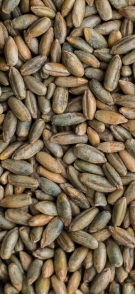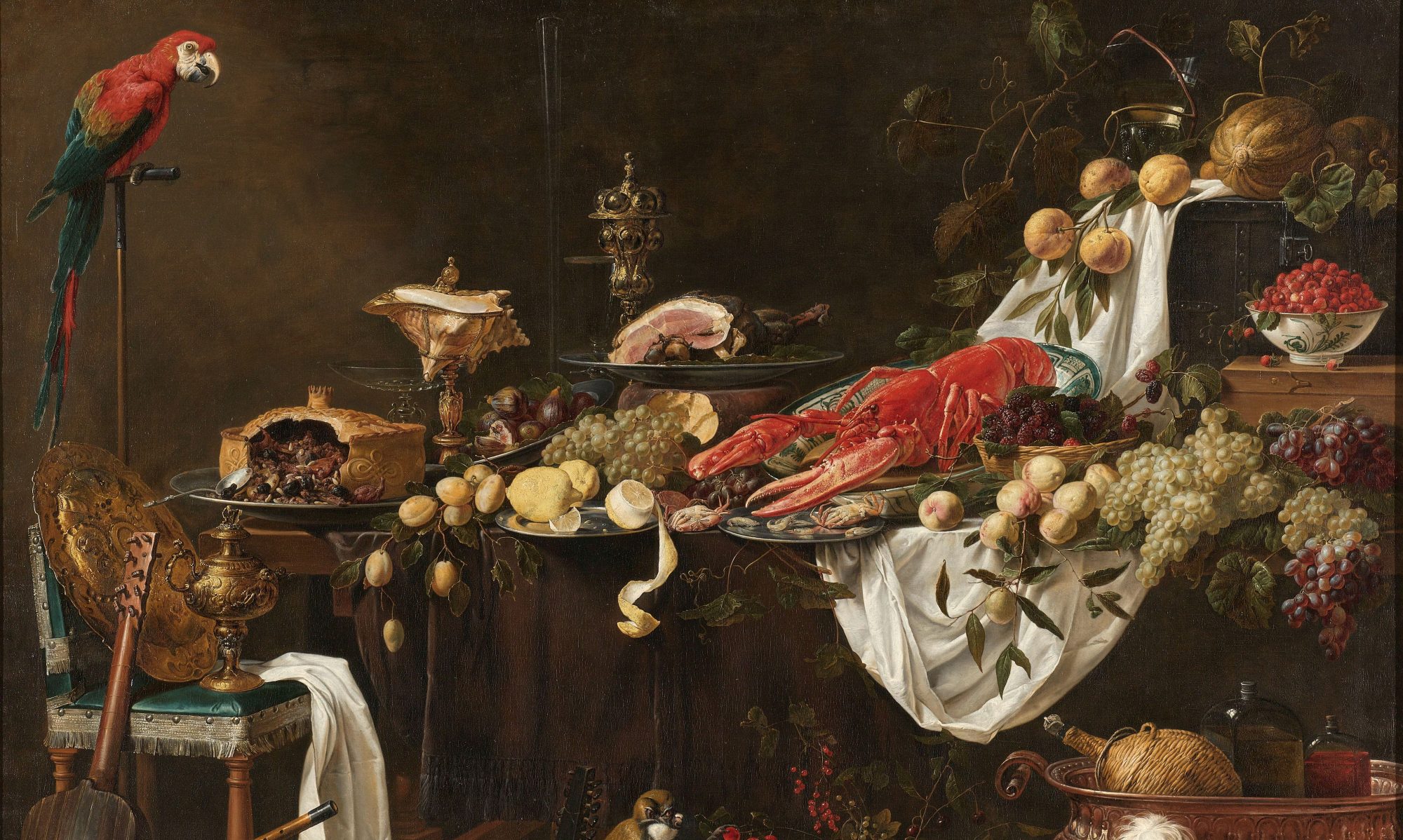Origin: Frisia Makes: 1 large bread
Meal: Breakfast, snack & lunch Total time: 22 – 26 hours
Related post(s):
Grutte Pier’s Rye Bread with Green Cheese
Ingredients:
• 350 ml water
• 100 g rye bread from a previous batch (small pieces)
• 9 g salt
• 1/4 tsp lactic acid
• 25 g barley malt or sugar syrup (or a combination)
• 500 g cracked rye
• 50 g rye or wheat bran
Instructions:
1. Heat the water to 90°C (you can bring it to a boil and let it cool down a little) and mix in the old rye bread, salt, lactic acid, malt and/or syrup. Put the cracked rye into a pan or large bowl and stir the water mixture through it.
2. Allow the mixture to rest for at least an hour while it is well-isolated*. You can also place it in the oven at 50°C or lower, but make sure it does not dry out!
3. Knead into an even dough and shape it into a brick. Roll it through the bran and place the brick into a rectangular cake tin that is slightly greased or lined with parchment paper.
4. Place a heat-proof container filled with water in the oven** and heat it to 110°C. Once the oven has reached the desired temperature, place the cake tin above the water and bake it for 8 to 22 hours***. Keep refilling the water container when required.
5. Take the loaf out of the oven and allow it to cool down. Slice the bread into 5 mm slices and place in a closed container until you are ready to eat it.
6. There are three ways to improve the bread’s otherwise short durability: pasteurise it for 15 minutes at 80°C, keep it in your fridge or freeze it. However, it will taste best when you eat it fresh!
*This will make the bread sweeter due to the conversion of starch into sugar. The longer it rests, the sweeter it becomes; some recipes call for 8 hours of resting.
**The steam that forms will keep the bread moist and slows down crusting. It also improves heat transfer into the bread.
***Depending on the desired taste and texture. The longer the loaf has been in the oven, the tougher sweeter and darker it is.
Historical Context:

In book 18 (chapter xl, paragraph 141) of his encyclopedic Naturalis Historica, Pliny the Elder did not exactly beat around the bush as he expressed his distaste for rye. He wrote:
“The Tauri people at the base of the Alps call rye ‘asia’; it is an inferior grain and is only used to prevent famine, it is prolific, has a remarkably thin straw, it is a sombre black in colour and is very heavy. It is mixed with spelt to mask its bitterness and even then it is very disagreeable to the stomach.”
According to a very odd (and likely false) myth, Napoleon Bonaparte also did not like the crop. As he was handed a slice of rye bread once, he supposedly shouted: “C’est du pain pour Nicol!” or “C’est bon pour Nicol!”; he thought the bread was only good for his horse, Nicol. Some of the German town’s inhabitants heard him say this and from that day on decided to call the bread accordingly: “Pumpernickel”.
However, it is estimated that an average small family consumed between 1.5 to 3.5 kg of rye bread during the 16th century. You would expect them to have named the bread long before the French invader arrived. Even though this myth has been proven to be false, it does give an interesting view on the common opinion on rye.
The recipe above is for a specific variant of rye bread: Frisian rye bread or “Brea”. It originates from the northern province of the Netherlands (Frisia). For a fairly popular type of bread, there is a surprising lack of (consistent) recipes online. Those that do float around on the internet seem to massively contradict each other. To be sure, I used three recipes that were fairly similar to each other. The sources of these recipes were professional bakeries, which is quite reassuring.

The bread has a very unique baking process (baking would hardly be the correct word to use). The loafs need to be in the oven for 8 to 22 hours at a very low temperature to allow the dough to cook fully. Because of the lack of air bubbles, heat transfer is a very slow process.
Brea has a surprising history in Frisia. It played an important role in a rebellion against the Hollanders under the command of a giant farmer-rebel-pirate. To read more about this story, take a look at the recipe for Grutte Pier’s Rye Bread with Green Cheese. It uses the rye bread created in this post at its base.
Sources: Het Keukentje van Syts [0], Naturally Ella [1], Bakkerijwiki [2], Hollandmeel, Bakkers in Bedrijf, Bakboerderij, University of Chicago, Snopes & Perseus


